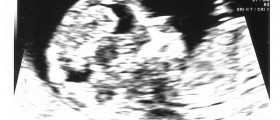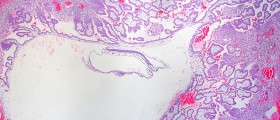
Introduction to Bleeding during First Trimester of Pregnancy
Vaginal bleeding during the first trimester of the pregnancy is definitely one of the most frightening experience a pregnant women may experience. The amount of lost blood varies and it may be in a form of spotting or in some cases it can lead to expulsion of blood clots. Many women have experienced bleeding during the first trimester. It may be normal in some cases and has been reported that up to a quarter of pregnant women do face vaginal bleeding during this stage of pregnancy. However, any bleeding which affects women within the first half of the pregnancy is considered threatening and carries risk of miscarriage.
Each case of bleeding during the first trimester needs to be reported to the medical practitioner. If there are additional symptoms such as severe cramps, lower abdominal pain or even fever the situation requires urgent medical help. Symptoms like these may point to miscarriage or tubal pregnancy.
Causes of Bleeding during First Trimester
Implantation bleeding occurs a few days after fertilization of an egg. It features with spotting or light bleeding. Implantation bleeding is a consequence of insertion of the fertilized egg into the wall of the uterus. During implantation blood vessels of the uterus are slightly damaged and may bleed. Bleeding due to implantation is considered normal and should not be a cause of worry.
Another cause of bleeding during the first trimester is ectopic pregnancy. This medical conditions features with implantation of the fertilized egg into the fallopian tube. The fallopian tube is not a suitable spot for implantation and once the embryo has reached certain size is causes rupture of the affected fallopian tube and consequent bleeding. Apart from the fallopian tubes ectopic pregnancy may occur in other parts of the abdomen and affect ovaries, peritoneum and cervix.
Miscarriage is always accompanied by bleeding. The bleeding due to miscarriage can be heavy or light, with the presence of brown discharge, blood clots and tissues. Additional symptoms of miscarriage include intensive pain in pelvic region and lower part of the back and abdominal cramps. Miscarriage typically occurs due to hormonal imbalances, weakened immunity, infections, accompanying illnesses, embryonic abnormalities, stress and trauma to the lower abdomen.
Apart from the previously mentioned vaginal bleeding in the first trimester of pregnancy may be additionally induced by infections, sexual intercourse, dehydration, molar pregnancy, bowel movements and occur during gynecological examination or transvaginal ultrasound. No matter what the cause is, it needs to be identified as soon as possible and the woman timely treated.
















Your thoughts on this
Loading...